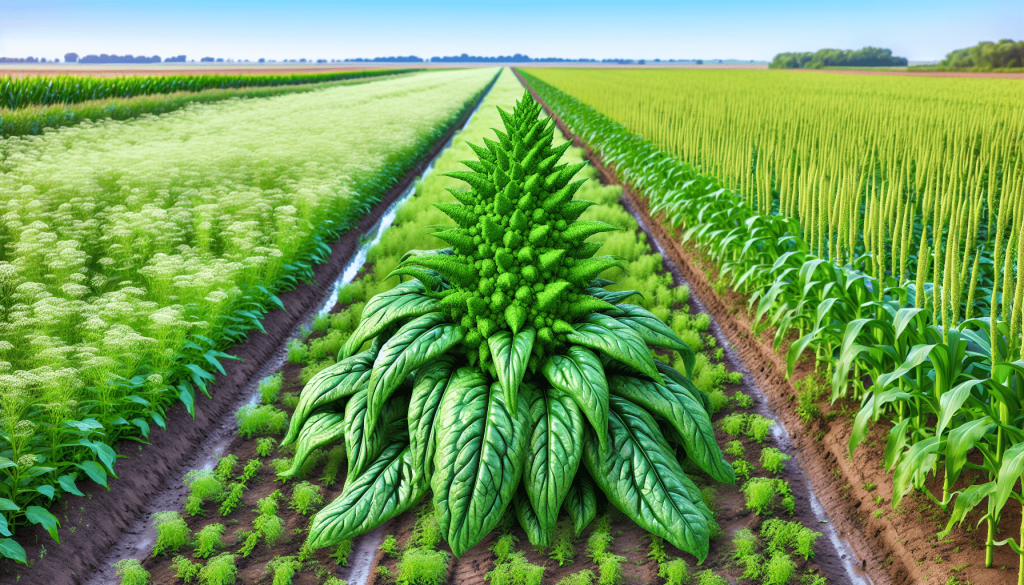Have you ever wondered how invasive plants like alligator weed make their way into agricultural lands, causing havoc for farmers and potentially affecting crop yields? Alligator weed (Alternanthera philoxeroides) is notorious for its resilience, rapid growth, and adaptability. Understanding how it spreads and learning effective strategies for preventing its invasion can save you a lot of headaches and resources. Let’s address this concern together and ensure your agricultural land stays free from this troublesome weed.
Understanding Alligator Weed
What is Alligator Weed?
Alligator weed is a perennial herb that originated in South America but has since spread to various parts of the world, including the United States, China, and Australia. It primarily thrives in wet environments such as riverbanks, lakes, and wetlands. Its rapid growth and adaptability make it a formidable invader both in aquatic and terrestrial ecosystems.
Why is it a Problem?
Alligator weed can outcompete native plants for nutrients, space, and light, thus disrupting the ecological balance. In agricultural settings, it can reduce crop yields and make land management more challenging. Its dense mats can choke waterways, affecting irrigation and even fisheries.
Identifying Alligator Weed
Physical Characteristics
Identifying alligator weed is the first step in managing it. Here are some key features to look out for:
- Leaves: Opposite, simple, and usually elliptical or lance-shaped.
- Stems: Hollow, brittle, and capable of rooting at nodes.
- Flowers: Small and white, grouped into compact, spherical clusters.
Common Confusions
Alligator weed can be easily confused with other species. For instance, it looks quite similar to Ludwigia species (water primrose). Therefore, paying attention to the unique characteristics mentioned above is crucial for accurate identification.
| Feature | Alligator Weed | Similar Plant (Water Primrose) |
|---|---|---|
| Leaves | Elliptical, opposite arrangement | More elongated, variable arrangement |
| Stems | Hollow and can root at nodes | Solid and generally don’t root at nodes |
| Flowers | Small, white, spherical clusters | Larger, yellow, and found singly |

Prevention Strategies
Regular Monitoring
One of the most effective ways to prevent alligator weed infestation is through regular monitoring. Keep an eye on your property, especially near water sources, to catch any signs of this invasive weed early.
Buffer Zones
Creating buffer zones with non-invasive plants around water bodies can prevent alligator weed from gaining a foothold. These plants will act as natural barriers, making it difficult for alligator weed seeds or fragments to establish themselves.
Water Management
Proper water management is crucial. Excess water, especially standing water, provides an ideal environment for alligator weed. Ensure that your fields are well-drained and avoid waterlogging.
Biological Control
Insects
One of the most environmentally friendly ways to control alligator weed is through biological agents like insects. Two insects in particular have been useful:
- Alligator Weed Flea Beetle (Agasicles hygrophila): This insect feeds on the leaves and stems, significantly reducing the plant’s ability to photosynthesize.
- Alligator Weed Thrip (Amynothrips andersoni): This insect also feeds on the leaves but is more effective during specific seasons.
Pathogens
Researchers are also exploring the use of fungal pathogens to control alligator weed. These fungi can weaken or kill the weed without harming beneficial plants.

Chemical Control
Herbicides
While chemical control should be a last resort, herbicides can be effective in severe infestations. Some commonly used herbicides include:
| Herbicide | Application Method | Effectiveness |
|---|---|---|
| Glyphosate | Foliar spray | Effective but non-selective, meaning it can kill other plants too |
| Imazapyr | Soil or foliar application | Very effective but may require multiple applications |
Timing and Application
Applying herbicides at the right time is crucial for effectiveness. The best time is usually during the plant’s active growing season. Following the manufacturer’s instructions ensures that the herbicide is used safely and effectively.
Mechanical Control
Manual Removal
Manual removal can be effective in small patches. However, it requires ensuring that all parts of the plant are removed, as even small fragments can regrow.
Mowing and Cutting
Regular mowing and cutting can keep alligator weed under control but will not eradicate it. Combining this method with other control strategies can be more effective.
Integrated Weed Management
Combining Methods
No single method will provide a long-term solution to alligator weed infestation. Combining various strategies—biological, chemical, and mechanical—will offer more comprehensive control.
Monitoring and Adjustment
Regularly monitor the effectiveness of the applied strategies and make necessary adjustments. This adaptability ensures that the weed management plan remains effective over time.
Importance of Education and Awareness
Training Programs
Participating in workshops and training programs about invasive weed management can provide valuable insights and up-to-date information on control methods.
Community Involvement
Engaging the local community in prevention and removal efforts can be highly effective. When everyone is vigilant, the chances of alligator weed spreading are significantly reduced.
Conclusion
Dealing with alligator weed can be challenging, but with the right strategies, you can prevent it from taking over your agricultural land. Regular monitoring, effective water management, and an integrated approach to weed control will help you maintain a healthy, productive environment for your crops. Stay informed, be proactive, and you’ll be well-equipped to keep this invasive weed at bay.
